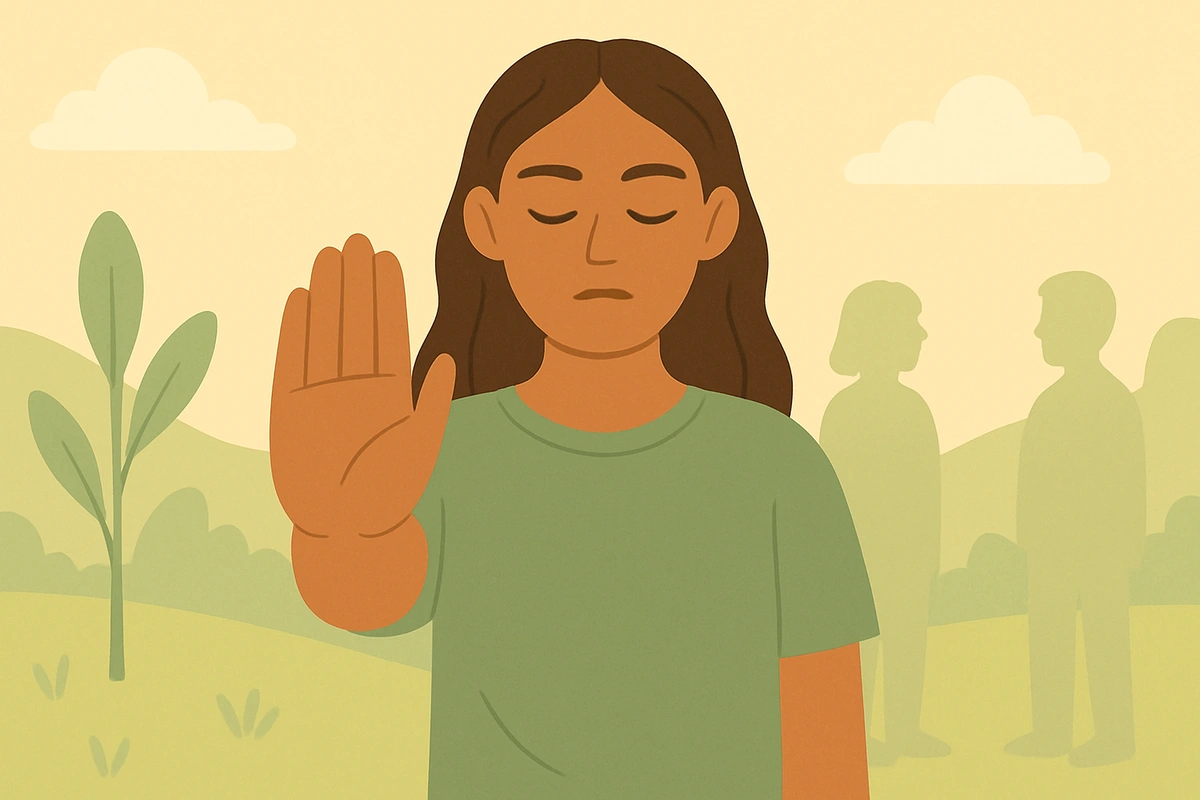Learn to define clear personal limits and communicate them effectively to reduce anxiety, prevent emotional overwhelm, and create healthier relationships through structured boundary-setting techniques.

Setting boundaries involves clearly defining personal limits around your time, energy, and emotional resources, then communicating these limits to others in direct, respectful ways. This essential life skill helps prevent the anxiety that comes from overcommitment and unclear expectations while building stronger, more authentic relationships.
Many anxieties people experience are due to poor boundaries, according to mental health experts. When you lack clear boundaries, you may find yourself constantly stressed about disappointing others, taking on too many responsibilities, or feeling emotionally drained from one-sided relationships. Learning to set and maintain healthy boundaries creates a protective framework that allows you to prioritize your wellbeing while still maintaining meaningful connections with others.
Setting boundaries works by addressing multiple psychological and physiological aspects of anxiety and stress. Anxiety and stress develop when you take responsibility for others' emotions, behaviors and thoughts. Boundaries help you distinguish between what you can and cannot control, reducing the mental burden of trying to manage other people's reactions.
From a neurobiological perspective, unclear boundaries create chronic stress that activates your body's fight-or-flight response. When we are constantly stuck in our sympathetic nervous system (or fight or flight) then this begins to take its toll on our bodies and minds. This prolonged stress response leads to elevated cortisol levels, which can worsen anxiety symptoms and create a cycle of emotional overwhelm.
Research shows that learning to set boundaries more effectively helps people deal with symptoms of depression and anxiety. When you establish clear limits, you activate your parasympathetic nervous system - your body's "rest and digest" mode - which naturally reduces stress hormones and promotes emotional regulation.
Boundaries also work by improving what psychologists call "psychological freedom" - your ability to make choices based on your values rather than external pressure. This autonomy strengthens your sense of self-worth and reduces anxiety about disappointing others or meeting unrealistic expectations.
"I feel selfish or guilty when I set boundaries" - These feelings are normal for people new to boundary-setting. Remember that boundaries not only contribute to healthy relationships with others, they also bolster self-respect and self-love. Taking care of your needs enables you to be more present for others.
"People get angry or upset when I set boundaries" - Some people may react negatively to boundaries, especially if they benefited from your previous lack of limits. An extreme and negative response to a boundary is evidence that the individual may be emotionally manipulative. Healthy people respect reasonable boundaries.
"I don't know what my boundaries should be" - Start by noticing your emotional and physical responses to different situations. What makes you feel safe? What makes you feel uncomfortable? These bodily signals often indicate where boundaries are needed.
"I set boundaries but can't maintain them" - Consistency is challenging but crucial. Have a specific plan for how you'll respond when boundaries are tested. Practice your responses and remind yourself that maintaining boundaries gets easier with repetition.
"I'm afraid of damaging relationships by setting boundaries" - Setting clear boundaries at work and in your relationships ensures your needs are being met. Boundaries help us maintain balance and foster healthy relationships. Relationships that can't respect reasonable boundaries may not be as healthy as they appear.
"My family/culture doesn't understand boundaries" - Cultural or family expectations can make boundary-setting more complex. Start with small, less controversial boundaries and gradually work toward more significant ones. Consider seeking support from others who understand your cultural context.